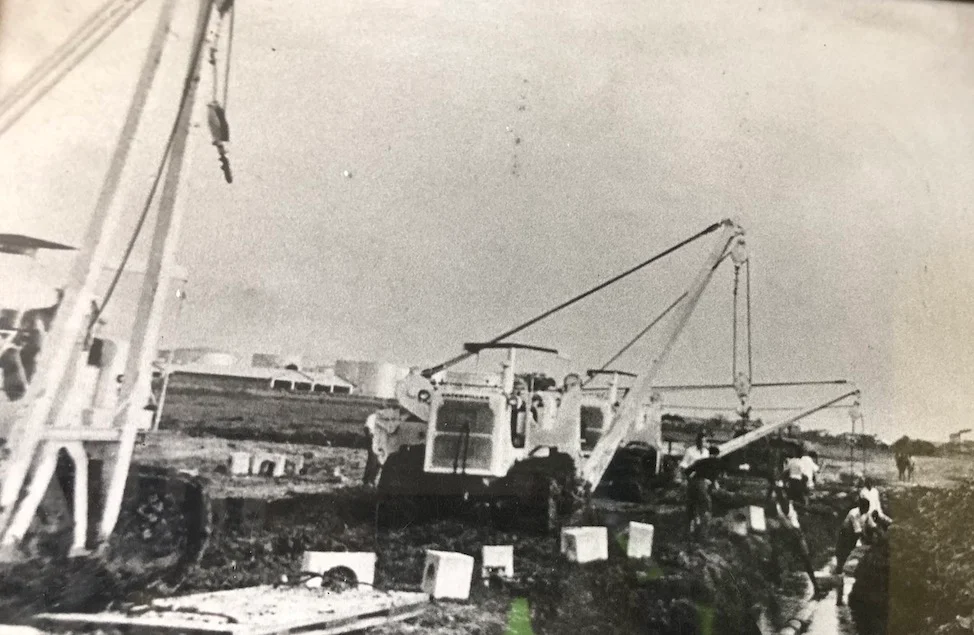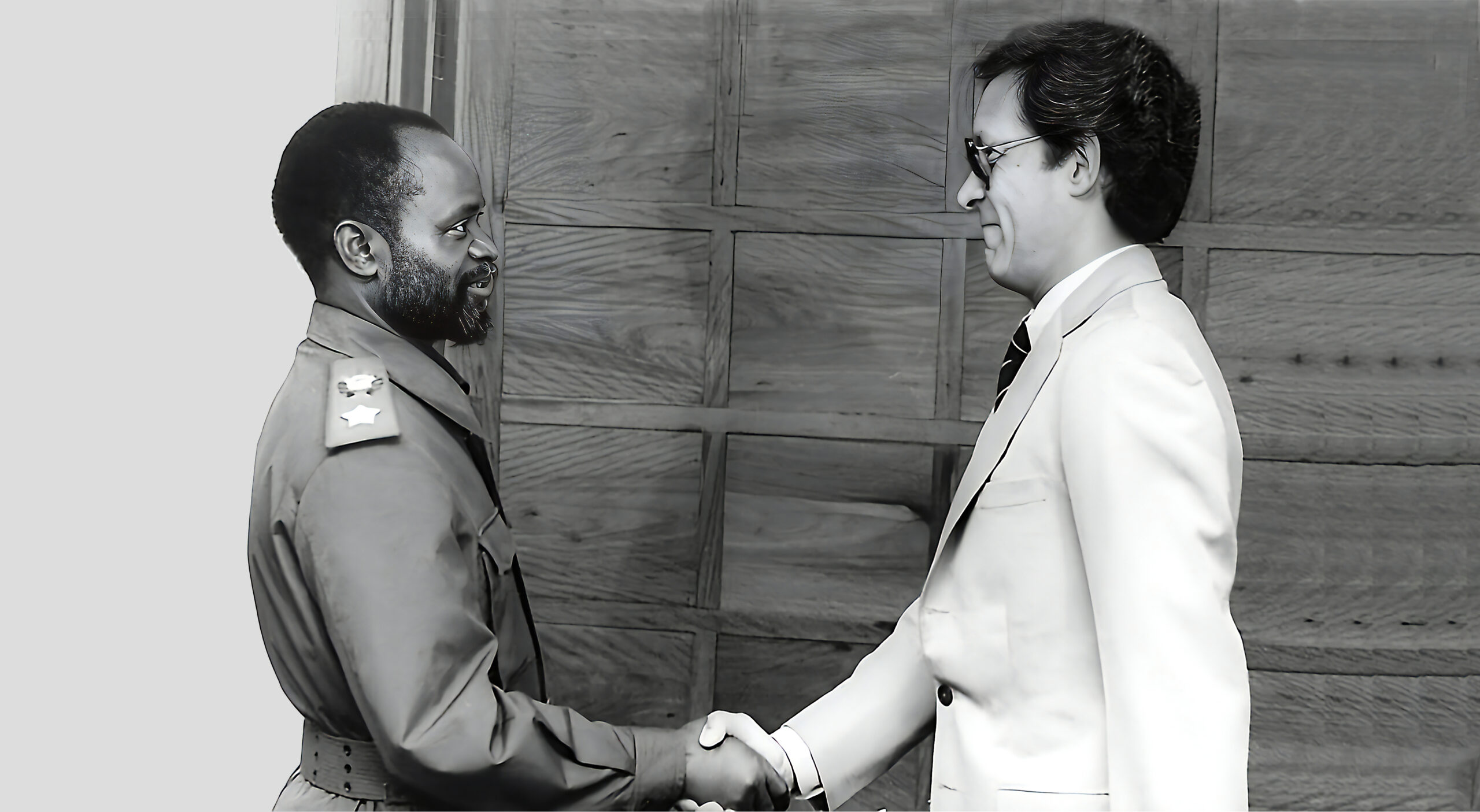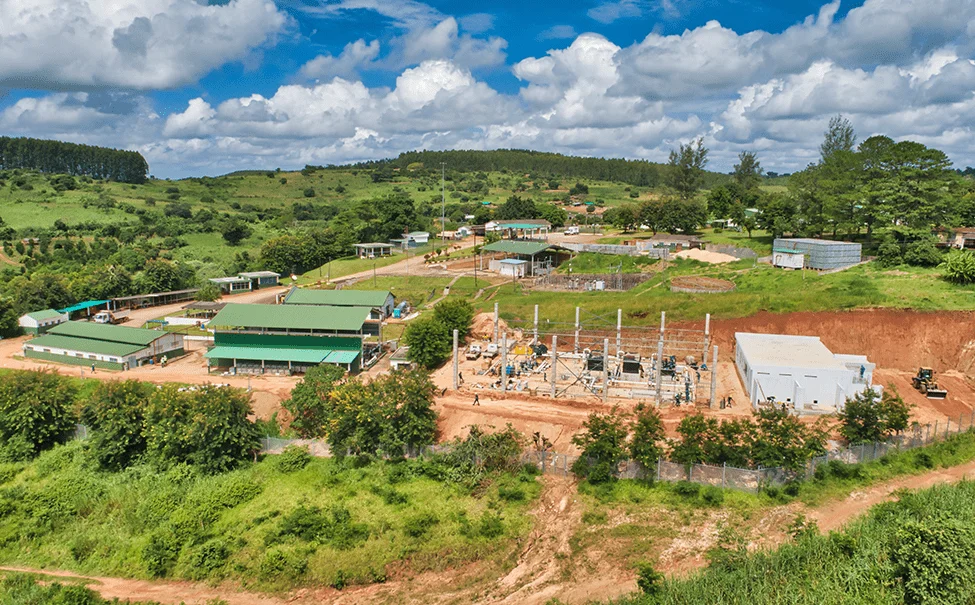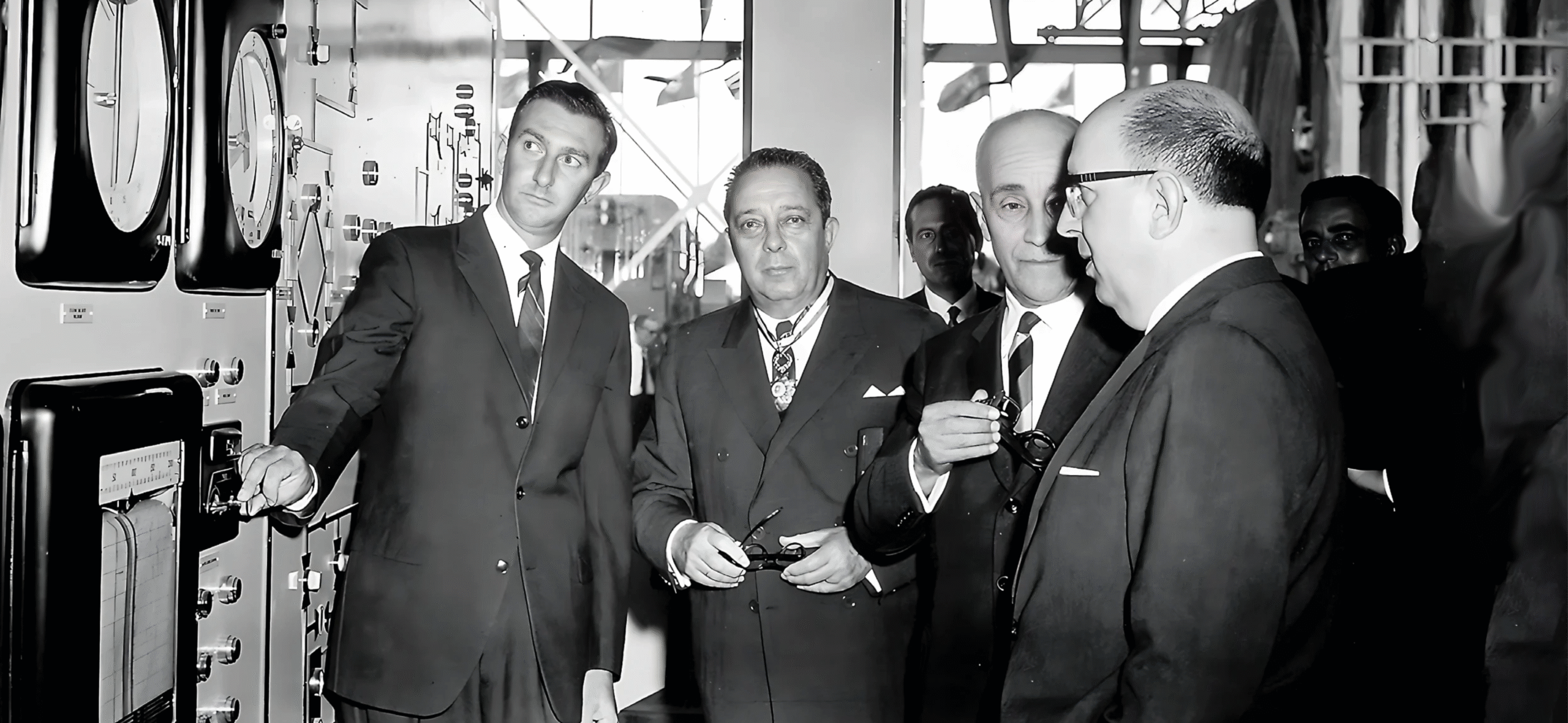From the idea two men came up within in the 1950s to the exemplary engineering project which is still the most efficient way to transport oil between Beira and Zimbabwe. Learn about CPMZ’s history.
1950s
José Dias da Cunha and Roland “Tiny” Rowland set up CPMR – Companhia do Pipeline Moçambique-Rodésia, SARL, to build and manage a pipeline between the port of Beira and the Feruka refinery in Zimbabwe.
1964
Pipeline construction is completed.
1965
– January: Pipeline starts pumping.
– November: Southern Rhodesia unilaterally declares independence. International sanctions force work at the pipeline to stop.
Origins
CPMZ’s history began with a visionary idea in the second half of the 1950s: to set up a large-scale infrastructure from the port of Beira that could meet the fuel requirements of the three hinterland countries – Zimbabwe, Malawi and Zambia – which, at the time, formed the Central African Federation. This concept included the construction of an oil refinery in Zimbabwe (Feruka) and a pipeline to supply crude oil from Beira.
This was the strategic vision of José Dias da Cunha, Chief Executive Officer of the Entreposto group of companies, and Roland “Tiny” Rowland, who would later become CEO of the British Lonrho Group. In a joint consortium, they were to set up CPMR – Companhia do Pipeline Moçambique-Rodésia, SARL, which was responsible for building and operating the pipeline and was the precursor to CPMZ. The construction and operation of the refinery was handled by a consortium of oil companies known as CAPREF.
The idea became reality when the construction of the pipeline and the refinery was completed in December 1964. In January 1965, the pipeline began operations, transporting crude oil from the port of Beira to the refinery in Feruka. The initial pipeline capacity was estimated at one million tonnes of crude oil per year.
However, its activity was short-lived. On 11 November 1965, ten months after transport operations began, Southern Rhodesia (now Zimbabwe) unilaterally declared its independence. In response, the UK and the UN imposed heavy sanctions, including cutting off the supply of fuel to Southern Rhodesia through Mozambique.

1979
Roland “Tiny” Rowland and the sons of José Dias da Cunha go ahead with a project to resume pipeline operations.
1980
Independence of Zimbabwe (formerly Southern Rhodesia) is acknowledged.
Incorporation of CPMZ – Companhia do Pipeline Moçambique-Zimbabwe, Limitada.
1981
Major overhaul of the pipeline.
1982
Pipeline resumes transport of fuel between Beira and Feruka after 17 years.
Resuming operations
At the end of the 1970s, Roland “Tiny” Rowland and the sons of José Dias da Cunha resumed the original partnership and decided to ahead with a project to re-establish the pipeline. The agreement between them was concluded in December 1978, in anticipation of the formal recognition of Zimbabwe’s independence, which was to take place on 18 Abril 1980.
They set up a new company, CPMZ – Companhia do Pipeline Moçambique-Zimbabwe Limited (successor to CPMR), to bring the Beira-Feruka refined fuel transport line into operation. The company’s shareholder structure reflected this desire for continuity: two practically equal shares allocated to the private sector and the Mozambican Government. However, under the leadership of President Samora Machel, the Mozambican State entrusted the majority of the capital and the board members, as well as management of the company, to the private sector. The former Companhia do Pipeline Moçambique-Rodésia, SARL was reorganised so that it could hold CPMZ’s private sector share and its name was changed to Sociedade Moçambicana de Investimentos, SARL (SMI).
Re-establishing the transport operations also implied rethinking the operating model and the existing infrastructure, not least because the CAPREF refinery had closed down in the meantime. To this end, the pipeline was adapted to transport refined products (as opposed to crude oil) and, in 1981, an extensive upgrade of the pipeline and the equipment necessary to resume the supply after years of interrupted service began.
In June 1982, after the upgrade was completed, fuel again began to flow through the CPMZ pipeline over a distance of 294 kilometres from the port of Beira to Feruka. To this day, the supply to Zimbabwe has continued safely and efficiently.

2007
Renewal of Operating Agreement with the Zimbabwean Government.
2008 – 2014
Full renovation of pipeline.
2018
Beginning of Phase 1 of the expansion project.
2019
CPMZ resumes pumping in just 10 days after Cyclone Idai.
2021
CMPZ and Zimbabwe sign Memorandum of Understanding for Project Cobalt.
Preparing the future
Between 2008 and 2014, the pipeline was completely renovated without having to stop pumping. The investment in modernising its infrastructure, cutting-edge technology and the training of highly specialised teams meant that CPMZ is recognised today for its high-level engineering. The operational quality achieved ensures a robust transport service. Even after Cyclone Idai in 2019, which severely affected Beira and destroyed the pumping station control room, CPMZ was able to resume operations in just 10 days.
Fuel is supplied to Zimbabwe under an Operating Agreement signed with the Zimbabwean Government and renewed in 2007, but the shared ambition of CPMZ and Zimbabwe goes further still. Together, our strategic vision is for the country to be the central hub for distributing refined petroleum products to the South African hinterland through the CPMZ (Beira-Feruka) and PZL (Feruka-Harare) pipelines.
In order to achieve this goal, in 2018, CPMZ began the first phase of an ambitious expansion project that will enable it to increase pipeline capacity from two to three million cubic metres per year in 2022 and, later on, to five million cubic metres per year (with the possibility of accommodating higher demand).
In 2021, CPMZ and Zimbabwe and Zimbabwe signed a Memorandum of Understanding for the development of Harare as a fuel distribution hub for the hinterland (Project Cobalt).


